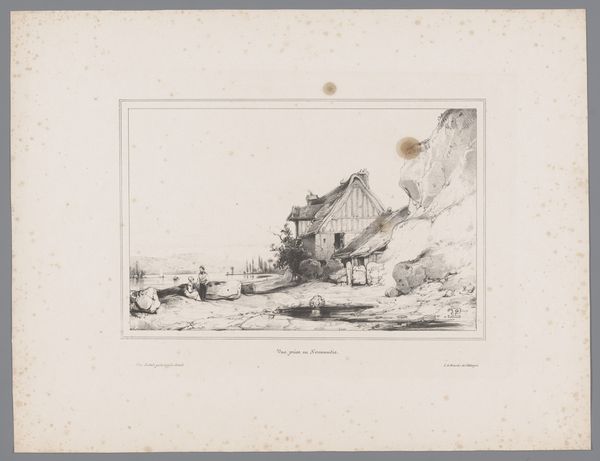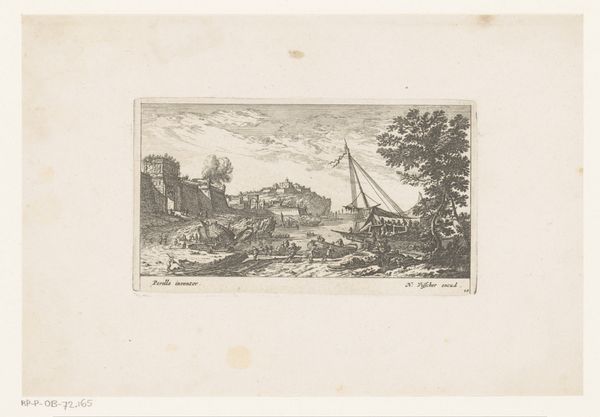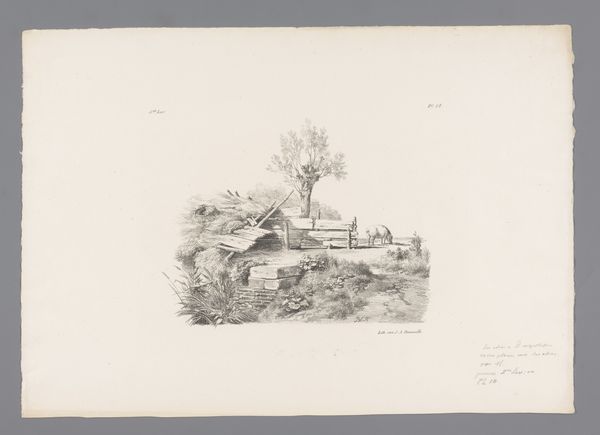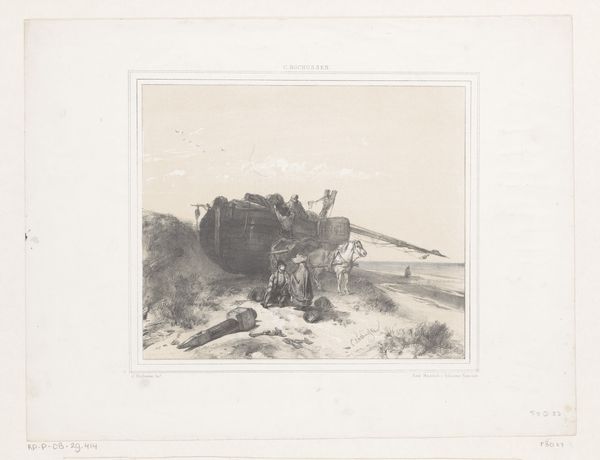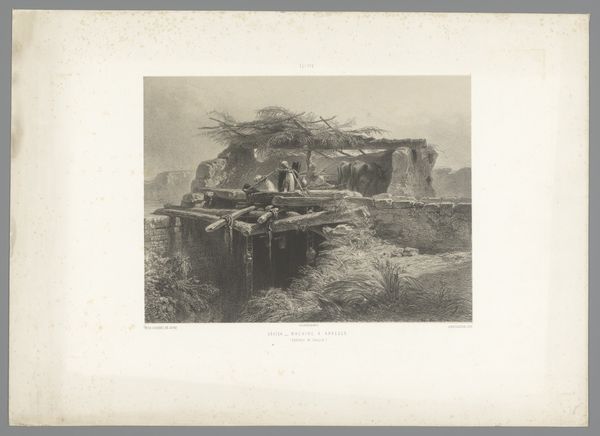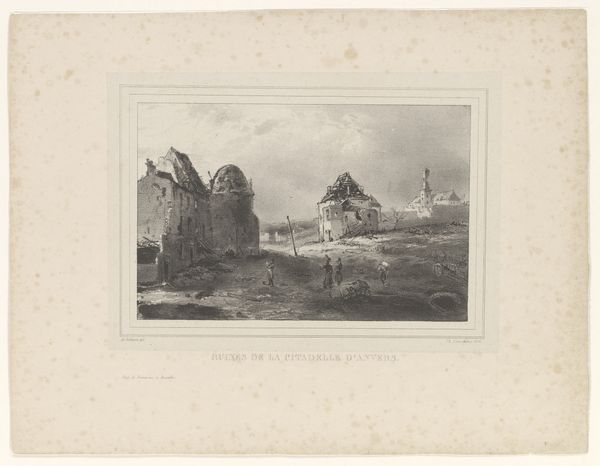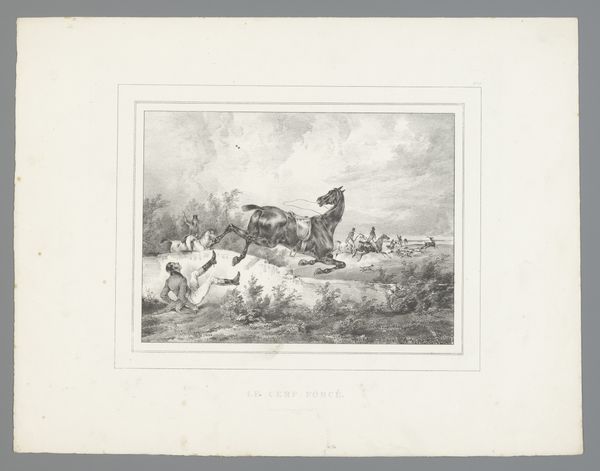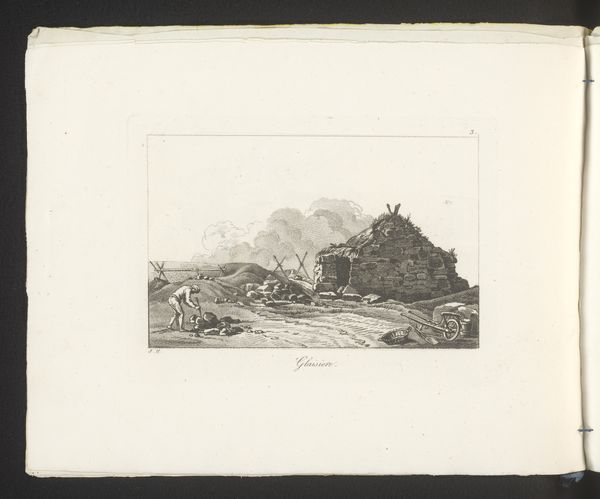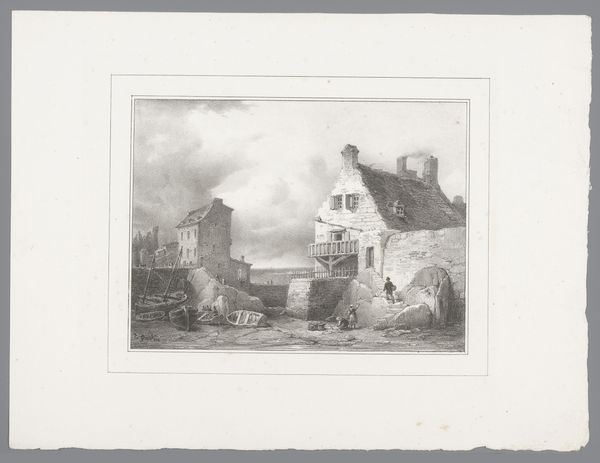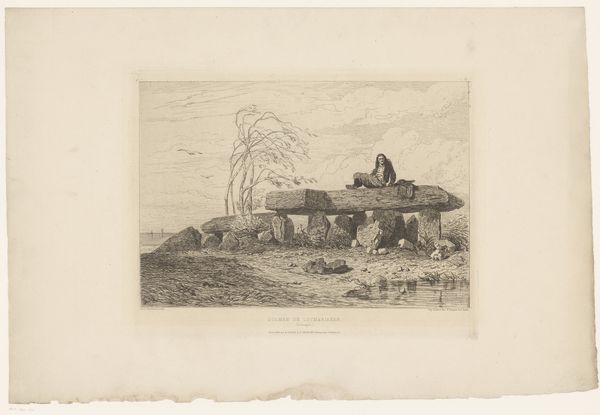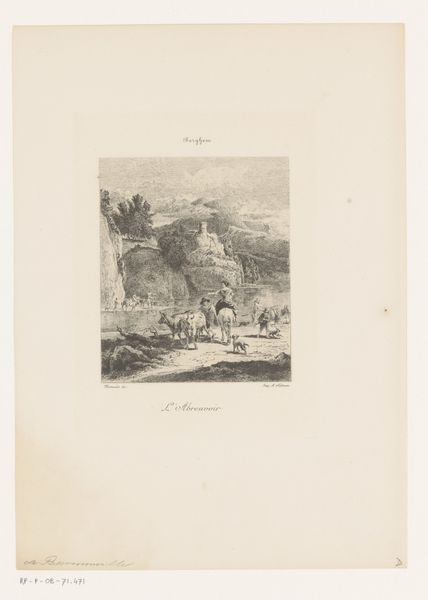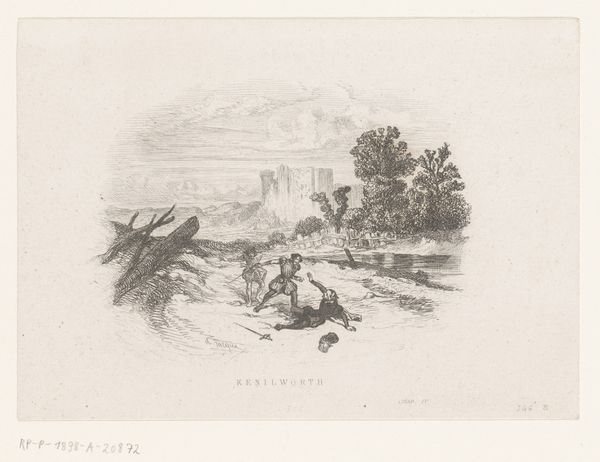
Dimensions: height 360 mm, width 551 mm
Copyright: Rijks Museum: Open Domain
Curator: Looking at this etching, I immediately feel a sense of stillness, almost like the world is holding its breath. The subtle gradations of grey create a really captivating atmosphere. Editor: Indeed. What strikes me is the almost picturesque nature of this landscape by Louis-Julien Jacottet. It's titled "View of the Ruins of Hammershus Castle", created in 1851, and preserved at the Rijksmuseum. Its appeal stems, I think, from the way it represents ruins. Not merely as decaying structures but as a testament to power dynamics across centuries. Curator: It totally screams Romanticism, doesn't it? All that sublime nature and crumbling authority… it just makes you wonder about who built that castle, who lived there, and why it’s in ruins now! The scene focuses very closely on this weathered bridge, adorned by vegetation as a foreground subject. But the imposing ruins behind, up on a precipice! So dramatic, I love it. Editor: Right! Consider Hammershus, the actual historical site, situated on Bornholm, an island that has witnessed multiple rulers and power struggles between Denmark and Sweden. This image captures it during a period of increasing national romanticism, in which landscape, history and nationhood become deeply entangled, producing art rife with ideology. Note, also, that from an eco-critical point of view, Jacottet has a talent for suggesting deep geological time: those are not just random rocks, but materials subject to a continuous process of erosion. Curator: That gives me the shivers... In a good way! The contrast between the hard, sharp lines of the stone and the soft, wispy clouds, is really stunning. It is like a moment caught between epochs, suspended in time, which almost tells a forgotten legend. This interplay invites introspection. Editor: Absolutely. Jacottet uses etching— a process of corrosive resistance— as a particularly suited visual form to explore themes of fragility, resilience, and change inherent in our society, its relationship to our architectural endeavors, and the earth. These reflections make Jacottet's image not simply a landscape print but an eloquent statement on human existence within natural and historical cycles. Curator: You are right, this makes us question what "progress" really means when faced with the grandeur and the cyclical rhythm of history. I love that it inspires so much contemplation. Editor: Yes, ultimately, Jacottet's delicate yet powerful strokes not only depict ruins but open a dialogue with the present and future.
Comments
No comments
Be the first to comment and join the conversation on the ultimate creative platform.
